Breitling Watches – A Brief History
Who are Breitling watches, and what is their history?
The Breitling brand has been producing stunning timepieces for over 130 years, and is responsible for some of the most precise timing devices ever created. Working out of his workshop in the Jura mountains, Léon Breitling focused on making very intricate complex watches that pushed the boundaries of timekeeping precision. Within ten years of getting the brand up and running, Léon’s success meant that the Breitling company had to move into bigger premises, transferring to a factory in 1892.
Léon Breitling continued to make watches and chronographs until his death in 1914, leaving the business to his son, Gaston. Gaston continued the work of his late father – although his time at the helm was tragically short. Gaston developed produced the Breitling chronograph, which was popular among the military police forces during World War I. Gaston’s death, shortly after the Armistice, rendered the Breitling brand leaderless. It was a long, lost five years before Gaston’s son, Willy, stepped into the leadership role.
The development of Breitling watches
Willy was able to pick up where both his father grandfather had left off, making the most of opportunities within aviation. Taking a fresh approach as to where Breitling watches could be used, Willy secured a contract to provide Breitling watches to the British Air Ministry. The Breitling watches featured several timing conversion rulers that made them invaluable to pilots, who needed to generate in-flight calculations for distance, speed fuel, among others. The development of the slide rule bezel made Breitling watches not only instantly recognisable, but endlessly practical.
Willy’s move into aviation proved to be inspiring, with Breitling watches becoming the must-have timepiece of the skies. With a starring role on the wrists of the British Royal Air Force, the Breitling brand began to be adopted by commercial pilots too. However, Breitling’s reach didn’t stop there. Working with Lt. Commander Scott Carpenter on the Mercury-Atlas 7 mission, Breitling adapted the Breitling Navitimer to replace the standard twelve-hour clock with a twenty-four-hour one. This gave more meaning to time as – in space – the normal Circadian rhythm is null void.
Breitling Chronomat History
With the introduction of the Breitling Chronomat in 1969, it’s easy to believe that the brand’s future was secured. Although Breitling had developed the world’s first self-winding chronograph in the Chronomat, the emergence of quartz movements damaged Breitling’s star. By 1979, Willy Breitling had been forced to close the company.
Ernest Schneider Breitling
Enter Ernest Schneider, a pilot turned watchmaker, who managed where Willy Breitling had failed. Schneider was able to harness quartz technology, and developed watches featuring a traditional handset alongside digital displays. This made the Breitling an easy choice for the aviators who made it their watch of choice. Models, including the Breitling Jupiter, Breitling Pluton, and Breitling Mars, were developed through consultation of aviation professionals pilots led the way for the subsequent Breitling B-1, the Breitling Aerospace Breitling Emergency.
Pre-owned Breitling Watches at Suttons & Robertsons
Discover pre-owned luxury Breitling watches at S&R London Jewellers here. Here at S&R London Jewellers, we are renowned for our collection of pre-owned luxury watches from world leading brands such as Rolex, TUDOR, TAG Heuer, Gucci, Bvlgari, Breitling, Cartier and more. Browse all pre-owned designer, luxury, and vintage watches at S&R London Jewellers.
Discover the original article here: www.suttonsandrobertsons.com/articles/breitling-watches-a-brief-history/









